Intro
Discover Walking Pneumonia Symptoms, including mild cough, fatigue, and fever, and learn about diagnosis, treatment, and management of atypical pneumonia and bronchitis.
Walking pneumonia, also known as atypical pneumonia, is a type of pneumonia that is typically mild and can be treated with antibiotics. It is called "walking" pneumonia because its symptoms are often mild enough that one can still be walking around rather than being bedridden. Despite its mild nature, walking pneumonia can still have a significant impact on one's daily life and overall health. Understanding the symptoms of walking pneumonia is crucial for early detection and treatment.
The importance of recognizing walking pneumonia symptoms cannot be overstated. If left untreated, walking pneumonia can lead to more severe complications, such as respiratory failure, which can be life-threatening. Furthermore, walking pneumonia can also lead to the development of other health issues, such as bronchitis, sinusitis, and even heart problems. By being aware of the symptoms of walking pneumonia, individuals can seek medical attention promptly, reducing the risk of complications and improving treatment outcomes.
Walking pneumonia is often caused by the bacteria Mycoplasma pneumoniae, although other bacteria, such as Chlamydophila pneumoniae and Legionella pneumophila, can also be responsible. The symptoms of walking pneumonia can vary from person to person, but they often include a combination of respiratory, systemic, and gastrointestinal symptoms. Some of the most common symptoms of walking pneumonia include cough, fever, headache, fatigue, and sore throat. In some cases, individuals may also experience nausea, vomiting, and diarrhea.
Causes and Risk Factors of Walking Pneumonia
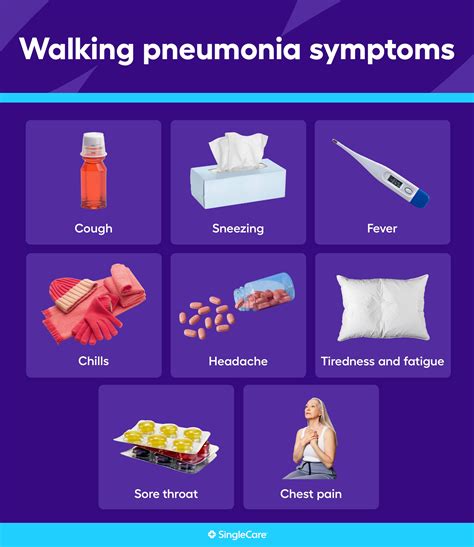
Types of Walking Pneumonia
There are several types of walking pneumonia, each with its own unique characteristics and symptoms. Mycoplasma pneumoniae is the most common cause of walking pneumonia, and it is often referred to as "atypical" pneumonia. Other types of walking pneumonia include Chlamydophila pneumoniae and Legionella pneumophila, which can cause more severe symptoms and complications. Understanding the different types of walking pneumonia can help healthcare providers develop effective treatment plans and improve patient outcomes.Symptoms of Walking Pneumonia
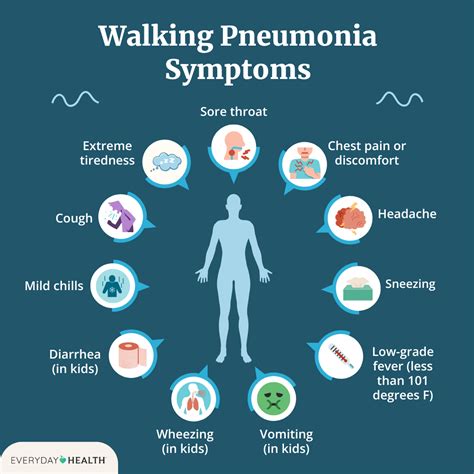
Diagnosis and Treatment of Walking Pneumonia
Diagnosing walking pneumonia can be challenging, as its symptoms are often similar to those of other respiratory illnesses. A healthcare provider will typically perform a physical examination, take a medical history, and order diagnostic tests, such as a chest X-ray and blood tests, to confirm the diagnosis. Treatment for walking pneumonia typically involves antibiotics, which can help alleviate symptoms and prevent complications. In some cases, individuals may also need to receive oxygen therapy or hospitalization to manage severe symptoms and complications.Complications of Walking Pneumonia
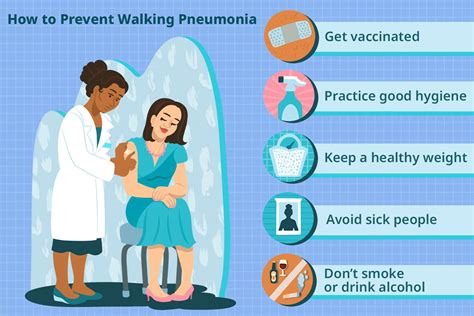
Prevention and Management of Walking Pneumonia
Preventing walking pneumonia is crucial to reducing the risk of complications and improving treatment outcomes. Individuals can take several steps to prevent walking pneumonia, including: * Practicing good hygiene: Washing hands frequently and avoiding close contact with individuals who are sick can help prevent the spread of walking pneumonia. * Getting vaccinated: Vaccines, such as the pneumococcal vaccine, can help prevent walking pneumonia and other respiratory illnesses. * Avoiding crowds: Avoiding crowds and large gatherings can help reduce the risk of exposure to respiratory droplets that can cause walking pneumonia. * Managing underlying conditions: Managing underlying conditions, such as chronic illnesses and weakened immune systems, can help reduce the risk of developing walking pneumonia.Treatment Options for Walking Pneumonia
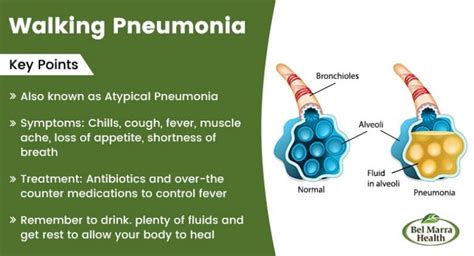
Home Remedies for Walking Pneumonia
In addition to medical treatment, there are several home remedies that can help alleviate symptoms and improve recovery. Some of the most effective home remedies for walking pneumonia include: * Resting: Getting plenty of rest can help the body recover from walking pneumonia. * Staying hydrated: Drinking plenty of fluids, such as water and herbal tea, can help thin out mucus and alleviate cough. * Using a humidifier: Using a humidifier can help add moisture to the air, which can help alleviate cough and congestion. * Practicing good hygiene: Practicing good hygiene, such as washing hands frequently and avoiding close contact with individuals who are sick, can help prevent the spread of walking pneumonia.Recovery and Prognosis of Walking Pneumonia
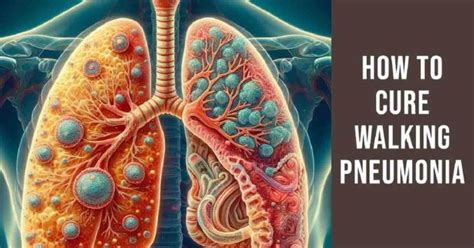
Follow-up Care for Walking Pneumonia
Follow-up care is essential to ensure that walking pneumonia is fully treated and to prevent complications. Individuals should follow up with their healthcare provider as directed to monitor their symptoms and adjust their treatment plan as needed. Additionally, individuals should also practice good hygiene and take steps to prevent the spread of walking pneumonia to others.What are the symptoms of walking pneumonia?
+The symptoms of walking pneumonia include cough, fever, headache, fatigue, and sore throat. In some cases, individuals may also experience nausea, vomiting, and diarrhea.
How is walking pneumonia diagnosed?
+Diagnosing walking pneumonia can be challenging, as its symptoms are often similar to those of other respiratory illnesses. A healthcare provider will typically perform a physical examination, take a medical history, and order diagnostic tests, such as a chest X-ray and blood tests, to confirm the diagnosis.
What are the complications of walking pneumonia?
+Walking pneumonia can lead to several complications, particularly if left untreated or if treatment is delayed. Some of the most common complications of walking pneumonia include respiratory failure, bronchitis, sinusitis, and heart problems.
How can I prevent walking pneumonia?
+Preventing walking pneumonia is crucial to reducing the risk of complications and improving treatment outcomes. Individuals can take several steps to prevent walking pneumonia, including practicing good hygiene, getting vaccinated, avoiding crowds, and managing underlying conditions.
What is the treatment for walking pneumonia?
+Treatment options for walking pneumonia typically involve antibiotics, which can help alleviate symptoms and prevent complications. In some cases, individuals may also need to receive oxygen therapy or hospitalization to manage severe symptoms and complications.
In conclusion, walking pneumonia is a type of pneumonia that can have a significant impact on one's daily life and overall health. Understanding the symptoms, causes, and risk factors of walking pneumonia is crucial for early detection and treatment. By being aware of the symptoms of walking pneumonia and taking steps to prevent it, individuals can reduce their risk of developing the condition and improve their overall health and well-being. If you suspect that you or a loved one may have walking pneumonia, it is essential to seek medical attention promptly to prevent complications and improve treatment outcomes. We encourage you to share this article with others and to comment below with any questions or concerns you may have about walking pneumonia.
